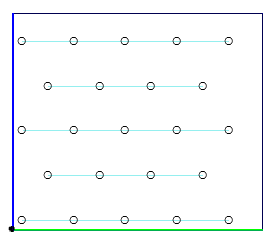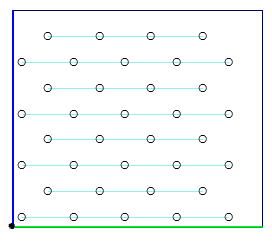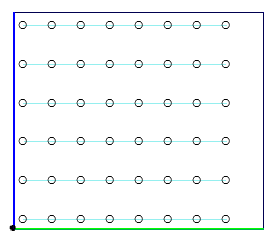Defining a Blast Pattern
Blasting results are usually improved when blastholes are drilled according to a staggered or triangular pattern rather than a "rectangular" or "square" pattern. This is especially the case when stronger, massive rock is being drilled. In general, a staggered pattern gives a more uniform distribution of explosives energy.
In the following examples, the row direction is parallel to the X (green) axis.
Triangular
The theoretically ideal blasthole pattern for homogeneous rock is based on an equilateral triangular grid. When you select this option , the burden distance is set to be the same as the spacing distance.

Staggered
The staggered blasthole pattern is a pattern based on a diamond grid. The spacing distance usually ranges between 100% and 200% of the burden distance.

Rectangular
Rectangular patterns with a spacing much less than the burden distance will tend to produce shearing or splitting between blastholes. This can allow explosion gases to escape easily, and may cause charges to sympathetically detonate, fire out of sequence, or misfire.

If the spacing is much larger than the burden, fragmentation may be coarser and the perimeter blastholes may leave an irregular rock face.